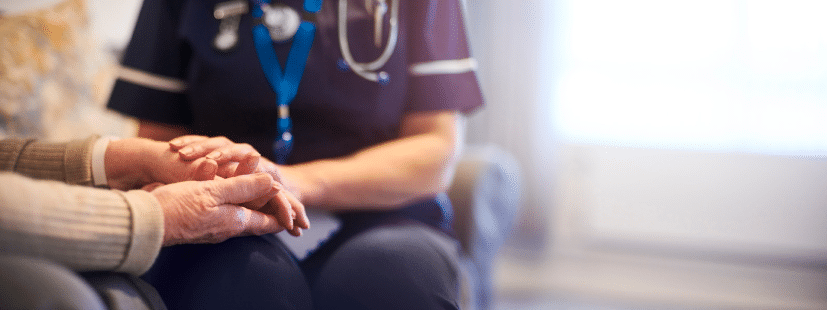Nursing home abuse statistics suggest that hundreds of thousands of elderly residents are mistreated and neglected in long-term care facilities every year. Understanding the extent to which abuse occurs—and which types of abuse are most prevalent—can help families be better advocates for their aging loved ones.
According to the CDC, more than 1.3 million people reside in nursing homes and long-term care facilities across the United States. Sadly, for many of these residents, abuse and neglect are a part of their daily lives.
In 2017, the National Ombudsman Reporting System (NORS) received more than 201,000 complaints of abuse and neglect from nursing home residents, family members, and other individuals.
While research and investigation into nursing home abuse are grossly lacking, there’s still evidence to show that hundreds of thousands of nursing home residents are abused every year.
How prevalent is abuse in nursing homes?
Research suggests that about 10 percent of all nursing home residents experience abuse or neglect. Statistically speaking, elderly women are more likely than elderly men to be victims of abuse.
The World Health Organization (WHO), however, estimates that the prevalence of nursing home abuse worldwide is somewhat higher, at 15.7 percent.
Elder abuse increased significantly during 2020 when many states were under mandatory lockdowns, and nursing home residents became even more isolated from their families. One study found that nursing home abuse increased by 83.6 percent during this time, resulting in approximately one out of five nursing home residents experiencing abuse.
That could mean that as many as 260,000 residents in nursing homes experience abuse or neglect every year.
Of course, it’s widely believed that nursing home abuse is grossly underreported. In fact, research suggests that for every one instance of abuse in a nursing home, 24 instances go unreported.

Who’s abusing nursing home residents?
Residents in long-term care facilities and nursing homes can be abused or mistreated by anyone, from certified nursing aides (CNAs) to therapists to physicians to other staff members and administrators. Other residents can also be abusive.
However, it’s typically those that spend the most time with residents who have the greatest opportunity for abuse.
An analysis of nursing homes found nurse aides have 80 to 90 percent of direct contact with residents. When surveyed, two out of three nursing home staff admitted to having abused or mistreated a resident at some point in the past year.
What’s the most common type of nursing home abuse?
There are countless ways in which nursing home residents can be abused. Abuse typically falls into one of five different categories:
According to data from the National Center on Elder Abuse (NCEA), psychological and emotional abuse are the most common types of abuse in long-term care facilities.
Emotional Abuse
Emotional abuse, which is sometimes referred to as psychological abuse, occurs when a caretaker intentionally causes a resident to experience distress, trauma, or emotional suffering.
Examples include:
- Yelling at a resident and other forms of verbal abuse
- Taunting or making fun of a resident
- Making threats against a resident or their family
- Intentionally ignoring the resident and their needs
- Excluding the resident from community activities
NCEA reports found that psychological abuse accounts for 33.4 percent of abuse in institutional settings.
Physical Abuse
Physical abuse occurs when a caretaker intentionally causes a resident to suffer physical bodily harm.
Common examples of physical nursing home abuse include:
- Hitting
- Punching
- Kicking
- Using tight restraints to prevent a resident from moving
- Grabbing a resident with enough strength to leave bruises and marks
According to the NCEA, physical abuse accounts for 14.1 percent of abuse reported in nursing homes.
Financial Abuse
Financial abuse is a huge problem for the elderly population across the country, and residents in nursing homes are no exception. NCEA data suggests that 13.8 percent of abuse in nursing homes is financial in nature.
This can involve stealing a resident’s personal property, misappropriating funds and payments, stealing a resident’s identity, or fraudulently convincing a resident to participate in a scam.
It’s (conservatively) estimated that financial abuse costs elderly Americans, including those in nursing homes, about $2.9 billion every year.
Neglect
Neglect, or the failure to meet a resident’s basic emotional, physical, and health care needs, is a cause for concern for thousands of facility residents every year.
Residents can be abused when they’re isolated or abandoned, if food or medication is withheld, or if they don’t receive necessary and prompt medical care.
According to the NCEA, neglect accounts for approximately 11.6 percent of all instances of nursing home abuse nationwide.
Sexual Abuse
Unfortunately, sexual abuse can—and does—occur in nursing homes across the country.
Sexual abuse can involve forcing a resident to engage in or watch sexual acts, touching a resident inappropriately, or forcing residents to engage in non-consensual sexual conduct.
Sexual abuse accounts for 1.9 percent of abuse in nursing homes, according to the NCEA.
Why is nursing home abuse underreported?
It’s believed that only about one out of every 25 instances of nursing home abuse is actually reported.
That’s a reporting rate of just four percent.
Why would nursing home abuse be so grossly underreported? Aren’t nursing homes legally required to report instances of neglect when they’re identified?
Ultimately, nursing home abuse is likely underreported because many residents:
- Fear that they’ll experience retaliation when their caretakers learn that they’ve spoken out about the abuse
- Are embarrassed or ashamed, don’t want to acknowledge the abuse, and may try to hide it even from family members
- Believe that they’ll be institutionalized for speaking out about the abuse they’ve experienced
- Aren’t physically or cognitively capable of reporting the abuse
Of course, caretakers who are abusing residents don’t want to shine a light on how they mistreat residents. Unless nursing homes have extensive monitoring in place and are willing to deal with the ramifications of abuse, these acts are likely to go unreported.
How to Help Victims of Nursing Home Abuse
Abuse is reported for hundreds of thousands of nursing home residents every year. Given the extent of underreporting, the true extent of nursing home abuse is likely much, much greater than this.
If you have a friend or family member who lives in a nursing home, it’s important to know how to identify potential abuse and how you can help victims of mistreatment.
- Check in with your family member regularly. Stay in regular contact and make note of any changes in their physical, emotional, or psychological well-being. Keep track of their finances and question any unusual transactions or charges. You know your family member best. You’re best suited to identify potential signs of abuse or neglect. Staying involved and in regular contact is the best way to keep them safe.
- Document signs of abuse or neglect. If you believe that a family member is being abused by caretakers in a nursing home, start to keep track of the signs. Keep a log of changes in behavior, physical wounds, bruising, and other things that might be indicative of abuse.
- Talk to your loved one. Make sure that they know that you’re there to support and help them and that they should feel comfortable confiding in you about any ways in which they’re being mistreated or that their needs aren’t being met.
- Address your concerns with their caretakers and the facility. You can address signs of abuse with your family member’s caretakers and gauge their reaction. How do they react? Do they become defensive and begin to blame the resident for potential issues, or do they appear to be genuinely concerned? It can also be important to get nursing home administrators involved to ensure that an appropriate light is being shined on the potentially abusive situation.
- Report imminent abuse to the local police. If you believe that your family member is in immediate physical danger, call your local police and ask them to intervene. This can help to remove a resident from an abusive situation immediately.
- Report abuse to your local nursing home ombudsman. Every state has an ombudsman program that advocates for residents in nursing homes and other long-term care facilities. You can find the long-term care ombudsman for your state here.
If your family member is being abused in a nursing home, you can’t trust that the facility will take responsibility for or own up to the ways in which they’re mistreating your loved one. It is important to stay vigilant and be your family member’s most passionate advocate.
You can also get help by reaching out to a nursing home abuse attorney near you. An attorney can help you prove that your family member is the victim of nursing home abuse, make sure that the misconduct is reported to the authorities, and work to hold the caretaker and facility financially responsible for the damage they’ve done.


